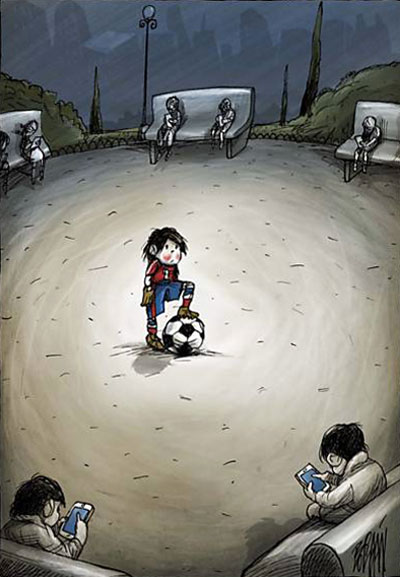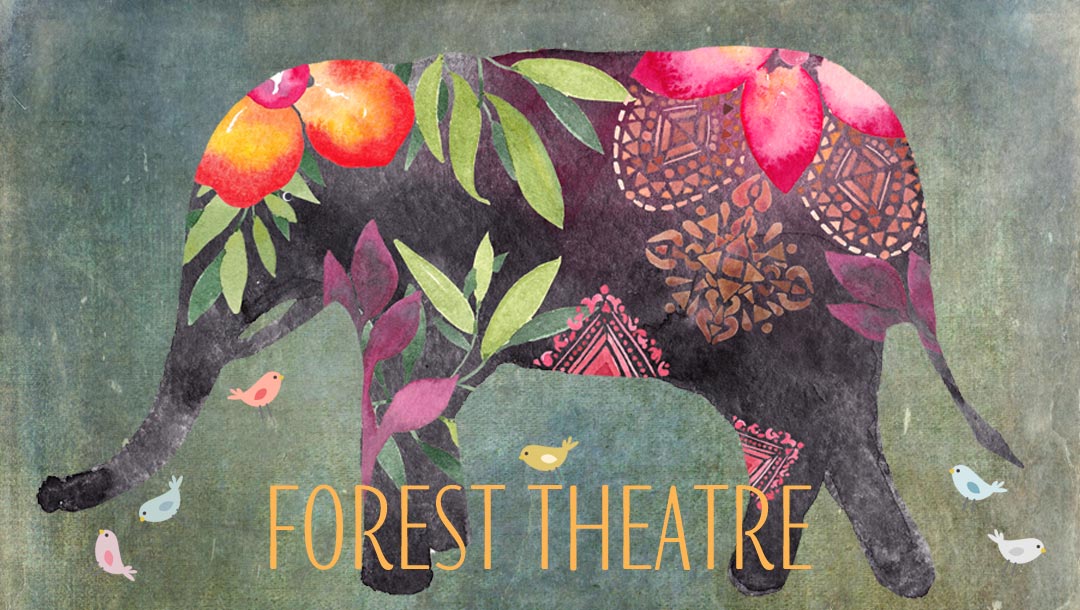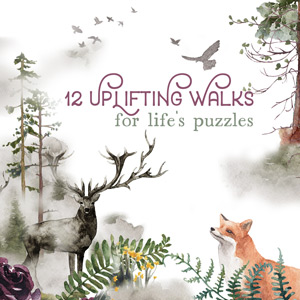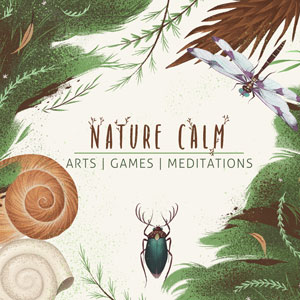Forest theatre is a set of creative exercises and mindfulness based games to reconnect with nature and with yourself. In this article you will learn a range of interesting activities for nature play. The ideas have been carefully selected to suit all age-groups. In fact, it is a wonderful way to bring people from different backgrounds and ages together and make new friends.
With the increasing influence of technology in our lives, fewer time is being spent outdoors. The screens keep us hooked by creating easy rewards for the brain, and are slowly influencing our behaviour and lifestyle. These brain rewards create unhealthy habits which are extremely hard to break. It’s no wonder that obesity, anxiety, loneliness and many other lifestyle issues are on the rise. We desperately need a substitute for all the junk entertainment that is being fed into our brains.

Is there a simple way to unblock our minds and imagination so that we can move away from our old habits and create new ways of being? Perhaps with forest theatre you can choose a few moments to break free and learn to fly.

Benefits of Nature Play
The main benefits of nature play, besides having great fun and creating memorable moments is the positive effect on our self expression and self confidence.
Forest Theatre also enhances our observation and imagination. It builds our attention, and curiosity and will lead to higher self awareness and self control. These may seem like simple things but as we shall see later in the article, they can make a big difference in overcoming addictions and breaking bad habits in life.
Forest theatre is a pathway to explore our inner selves by taking inspiration from nature. It is about learning with nature, in nature. And we all know, the best learning happens when it is fun.
Forest Theatre Rules
When you do theatre in any nature based setting, the one simple rule to follow for forest theatre which sets it apart from other theatre games is that in forest theatre only non-human nature sounds are allowed. You can choose to do all the activities in silence or pick up any sound in nature that you find interesting. e.g: wind, bird, cricket, bee. Except for the director or activity leaders all participants are only allowed to converse in their chosen nature sounds or through actions, for the entire duration of each activity.
Silent claps: At the end of each activity, even the applause is silent. We do this by raising both our hand in the air and shaking our fingers and palms like tree leaves on a windy day. This is an interesting way of bringing mindfulness to the theatre practise. It respects the soundscape of the performance space and integrates nature into your play.
Sharing: Over and above these games, another big learning happens when people share their insights from the activities. Creating a space for sharing at the very end of the walk, turns individual learning into a shared collective learning.
Listen. Observe. Accept. Create. Enjoy.
Forest Theatre Games
During the forest theatre games it is essential to create an atmosphere of trust and support. This is a space free of judgements and filled with acceptance. You are allowed to make mistakes, in fact in Forest Theatre there are no mistakes. Be spontaneous. In each activity, you can do the first thing that comes to your mind. You don’t have to edit yourself, as long as you are coming from a place of fun, love and respect.
And most importantly, remember we are playing together as a team and supporting each other. You don’t have to be clever or funny or make up jokes, just be true to yourself and do what comes naturally.

Nature Introduction
Ask the group this simple question “If you could be one thing in nature, what would you be? You can be anything you wish for – a cloud, a river, a butterfly, or whatever your mind can think of. Choose something that inspires you or something you relate to.”
The group stands in a circle and each person introduces themselves by enacting the one thing from nature that they would like to be. The others try and guess the nature object.
Creatures of the Deep
Everyone stands in a circle. The director does an impression of a creature from the deep to the person standing on his right side. They copy what they see to the next person on their right. Each person copies what they just saw, not the original, so they gradually change like Chinese whispers. The director keeps sending out loads of creatures (squid, octopus, shark, star fish and more) into the circle and they keep going around until they change and merge and underwater fun is had. Credit: HooplaImpro, London

Creative Object
Go for a silent walk in nature. Each person picks up any unusual or interesting object they find during the walk. At end of the walk all objects are placed in a small pile and everyone forms a circle around it. One by one the participants pick up any object from the pile and use creative visualisation to turn this object into something else. For e.g: A long stick can become a flying broom, or a microphone stand or a paddle for a boat. The others try and guess what the object is being turned into
Advanced: Repeat this exercise from the beginning, but add a new twist. When someone picks up an object and is enacting a novel use, another person from the group joins in and picking up another object from the pile builds upon the scene that is being created. This cycle is repeated in pairs. Any object which have been used once is not kept back in the central pile.
Super Advanced: In this round, one person starts with any object and begins the scene. Other people keeping joining in and adding to the scene by choosing other objects from the central pile. Go around the circle until all objects have been used up and all the people are part of the scene.
Volcano
Everyone is walking fast in a tight circle without crashing into each other. The director shouts out some object from nature and counts to 5 and everyone has to physically form that thing with each other before the director gets to 5. For instance “Volcano, 1, 2, 3, 4, 5! Dinosaur, 1, 2, 3, 4, 5!”. It is used to get everyone moving around and having fun and also accepting and building on each other’s ideas. Credit: Marc Rowland at Montreal Improv.
A variation of this game is to divide your group into 2 teams. Each of the teams form the same object to the count of 5. This is a good way to observe how the same object can be interpreted and created in different fun ways.
You could also try whispering a different object to teams of 3-5 people. The team members have to move themselves to depict the object. Each team gets a count of 10, but they cannot talk to each other. Once a team creates their object the others can try and guess what it is.

Fairy Tale in 3 Frames
Divide people into small groups. Each group has to think of a fairy tale they would like to portray. They can only depict three still frames from any portion of the fairy tale. You can include one sound and one action in each of the frames. All the groups get only 5 minutes to prepare. The 3 still frames from the fairytale are played out in quick succession, one after the other. Rest of the participants have to guess the fairytale after watching the 3 frames. This exercise is a good practice in learning how to build story structures and scenes. Once participants are comfortable with creating scenes, they can move on to creating a short skit. Credit: Rebekah Lin, Teng Zi Ying, Arts for Good Fellows, Singapore
Music Video / Nature Play
One of the joys of forest theatre is being able to create something for nature. In the last activity for our Nature Play walk, we divide the group in small teams of 3 or 5. All the teams are given 10 minutes time to prepare a 2 min. short skit on a nature based issue. They can take up any theme that interests them – water, wildlife, pollution or more. Members of the group can choose any character they wish and can use human language for this activity. Or if you wish to stick to the rules of forest theatre then ask each group to choose one narrator, while the other members can only act out the scenes.
Here’s an idea that works out beautifully. Create a 2 minute play with these 5 characters – Human, Planet Earth, Aliens, Non-human nature element and a Narrator

A Curious Way To Break Bad Habits
In this TED Talk, Psychiatrist Judson Brewer explains a simple way of using curiosity to break bad habits.
He says, “Mindfulness is about being really interested in getting close and personal with what’s actually happening in our bodies and minds from moment to moment. And this willingness to turn toward our experience rather than trying to make unpleasant cravings go away, is supported by curiosity, which is naturally rewarding.
What does curiosity feel like? It feels good. And what happens when we get curious? We start to notice that cravings are simply made up of body sensations — oh, there’s tightness, there’s tension, there’s restlessness — and that these body sensations come and go. In other words, when we get curious, we step out of our old, fear-based, reactive habit patterns, and we step into being.
One current hypothesis is that a region of the brain, called the posterior cingulate cortex, is activated not necessarily by craving itself but when we get caught up in it, when we get sucked in, and it takes us for a ride. In contrast, when we let go – step out of the process just by being curiously aware of what’s happening – this same brain region quiets down. This makes it easier for us to take a step back and not indulge in our habit leading to another nice brain reward.
Now, this might sound too simplistic to affect behaviour. But in one study, we found that mindfulness training was twice as good as gold standard therapy at helping people quit smoking. So it actually works. The next time you get a notification, instead of choosing to see the message and compulsively send a reply , — notice the urge, get curious, feel the joy of letting go and repeat.”

BONUS: More Forest Theatre Games
Meet and Greet
Another very nice introduction game: The group leader picks any class of species (e.g: mammals, birds, insects, reptiles etc.) and everyone walks around meeting and greeting each other by becoming a character from the chosen type of living beings. This exercise breaks the ice and gets people used to trying out different characters without thinking about it too much.
You can even choose a specific animal and everyone in the group has to turn into that animal and move around in the circle for a minute without touching each other. Some choices that work well are: Frogs, Mosquitoes, Humming birds. And the best one to quieten things is the slow moving Sloth.
Prey and Predator
The group forms a circular ring. Two people enter the ring. One person chooses to be any creature and begins to act like it. The other person has to guess what the creature is and turn into it’s predator. Then the drama between the prey and it’s predator plays out inside the ring. This game can be made even more interesting if one or two members standing in the ring are designated to give background music score to the entire drama. This game provides a very good opportunity to observe and discuss the balance in nature.

To Be A Tree
A very good closing exercise in Nature Play is a 3 minute silent act. Ask each person in the group to imagine to be their favourite tree. You can sway gently in the wind or sit still. Feel the sun on your face, the wind on your skin, the earth beneath your feet. Open your eyes and become aware of all the life around you. As an individual you may be a tree, but together we all become a forest.

The essence of theatre is freedom. Freedom to express oneself. Freedom to imagine. Freedom to choose whatever one wants to be. Our day-to-day life is bound by routines, habits and the daily grind. But through nature and through creativity we find a stage to release the chains of thought that bind us. We give ourselves the confidence to be truly free.

For those of you who are more interested in movement and dance, you can check out a modified version of forest theatre in our JOY WALK.
END NOTE: We are creating a small community of forest friends who share a close connection with nature. The aim is to learn from each other and share our experiences from around the world. Please feel free to add your own mindful nature play ideas in the comments section below. To get a monthly newsletter with new learning please sign up at this link.
*This post is part of our learning program on nature arts, games, meditations from around the world. The course is available on a pay-as-you-like basis. It is a great resource filled with multiple ideas for people who love nature.
Please share this article in your circles with friends who might find it helpful.




Hi, my name is Vikas and I’m a theatre artist , i have been looking for means and ways for years to connect Theatre with Nature, and after reading your post,I feel so spiritually strong and deeply connected after reading your post.
I work with children , and i basically look at ways to connect and share with children in diverse meaningful and purposeful ways for them to impact internally and externally.
I just want to thank you , for sharing this post…
Your admirer,
Vikas
LikeLike
One of my favourite ones is the Nature Philharmonics. Sit down on a rock, tree trunk, or anywhere that calls to you, and start listening. Concentrate on one bird singing, the gusts of wind, the cricket, whatever you hear.. and start directing it. Move your hands (you can use a stick as well) like the director of the philharmonic orchestra every time you hear the nature song you chose to concentrate on. After a while you can add some more sounds to it, even the human made ones (the motor saw, the airplane…). It feels funny and it certainly looks funny to people passing by. Fun guaranteed for all.
LikeLike